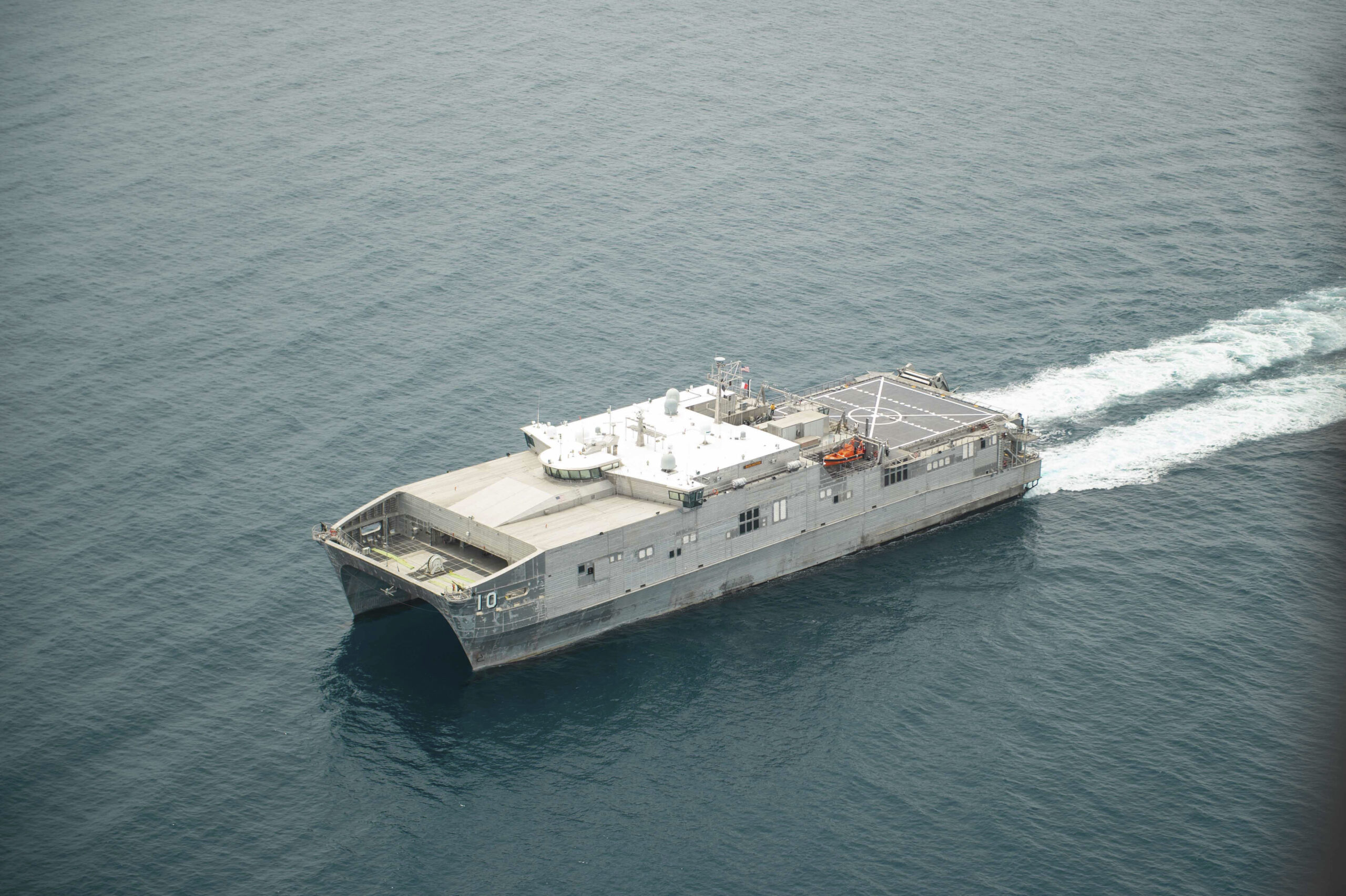
An expeditionary fast transport ship operates off the coast of Haiti. (U.S. Navy photo by Mass Communication Specialist 2nd Class Jack D. Aistrup)
Updated 8/2/2022 at 9:13 am ET to include a comment from a Navy spokesman.
WASHINGTON: The Navy is preparing a high-speed transport vessel to become the first “fully operational US naval ship” to be capable of autonomous travel in a commercial sea lane, a major advancement from the relatively smaller drones the service has previously transited autonomously.
The Navy is putting the ship, an expeditionary fast transport (EPF), through a series of test events dubbed the “Unmanned Logistics Prototype trials,” designed to challenge the ship in autonomous navigation, vessel handling and transfer of control between manned and unmanned modes, according to a July 29 service statement.
“The autonomous capabilities being demonstrated by this prototype system represent a major technological advancement for the EPF platform, the Navy at large and our industry partners. EPF-13 will be the first fully operational U.S. naval ship to possess autonomous capability including the ability to operate autonomously in a commercial vessel traffic lane,” said Tim Roberts, a senior Navy official overseeing the effort.
The Navy plans to also test the ship’s ability to navigate at night and in different weather conditions and sea states.
“These trials will set crucial groundwork for autonomous vessel operations, to include vessel encounter and avoidance maneuvering and compliance with International Regulations for Preventing Collisions at Sea,” according to the statement. A Navy spokesman told spokesman told Breaking Defense there would be five at-sea trials occurring throughout the summer.
The Navy has been experimenting with autonomous ship navigation in recent years and has successfully sailed its prototype medium-sized unmanned surface vessel Sea Hunter between San Diego and Hawaii multiple times.
But the difference between autonomous travel for Sea Hunter and an EPF is size. The former, clocking in around 140 tons, is a prototype that was built from the ground up with the idea that it will one day transit the ocean with minimal or even no human intervention. The latter is a military cargo ship, designed to move personnel, vehicles, supplies and other materials overseas and is nearly 10 times larger.
On the industry side, Austal, which builds the EPF and last year received a contract to begin furthering EPF-13’s autonomous capabilities, L3 Harris and General Dynamics are assisting the Navy with the tests.
Separately, Austal, HII, Lockheed, Fincantieri Marinette Marine, Bollinger Shipyards and Leidos-owned Gibbs & Cox all received follow-on contracts on Friday to continuing studies related to the Navy’s Large Unmanned Surface Vessel program.
GD chief says Navy’s 1 sub buy won’t impact company short term, but out years less certain
The comments from the General Dynamics chief come on the same day President Joe Biden signed the national security supplemental, which includes billions for the sub industrial base.



























